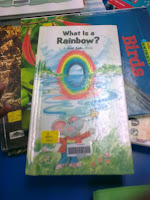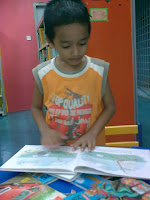-
-
-
Keeping a Journal
Keeping a journal of your own thoughts, action research projects and general teaching observations and progress can be enormously beneficial, but it’s important to think about how you structure this and what to include. -
Keeping a Journal
Keeping a journal of your own thoughts, action research projects and general teaching observations and progress can be enormously beneficial, but it’s important to think about how you structure this and what to include. - Why keep a journal?
• Keeping a journal can form an important part of your autonomous development and allow you to reflect on your teaching practice and help you to analyse and draw conclusions from some of the data you will be collecting.
• The process of having to write down your thoughts and reflections in an organised way should help to focus your mind on the lesson your teaching and what happened within the classroom.
• The journal can form an important record of your thoughts and developments over short and longer periods of time.
• If you are writing journal entries shortly after teaching, reviewing these a day or two later can be very informative as your perceptions and evaluation of what happened within the class can change quite a lot.
• If you review a number of entries over longer periods of weeks or even months, this may well help you to see common trends in your teaching and help you to isolate areas where problems regularly occur, where you need to do more work or where you have developed real strengths and overcome some obstacles. This can help you to set new goals for future research projects and developments and see real progress in your development. - How to structure the journal and what to include?
There are a number of ways you can structure your journal entries. When you first start keeping a journal you will need to experiment with a few different methods to find the ways that best suit you and the research that you are doing.
Here are some different methods, which you can try:
• Set a small number of specific questions to yourself that you will answer after each lesson.
• Write a descriptive entry stating what happened in the lesson
• Pick just one aspect of the lesson that made an impression on you and write about it.
• Choose a specific heading, for example ‘What I learned from teaching this lesson’ Or ‘How I would teach this lesson better next time’ and write only about that.
• You can write your journal entries in the form of comments on your actual lesson plan and keep them in your journal. This will help you to understand what the comments refer to and can help you remember what changes you want to make to the lesson if you teach it again.
• If you are undertaking a longer structured cycle of action research you might want to define specific things that you want to learn from each lesson. If this is the case write your aims for the lesson in your journal before you teach it for example, ‘By the end of this lesson I want to know …’ and then respond to yourself in the journal entry. - How much to write
Be careful that you don’t set yourself unrealistic goals and overload yourself with work. Writing in a journal can take time. To be useful you’ll also need time to systematically review and reread your journal entries and the more you have written the longer this will take.
If you are writing detailed entries in your journal, it is wiser to only write about one specific group / class of students or information relative to the specific aim of your current action research project, rather than trying to keep a detailed record of every lesson you teach. - The tone of you journal
Think about the tone of your journal.
• You could write as though you are writing to a fellow teacher. This will ensure that your explanations are clear to someone who may not have been present in the class and so help you to understand the entries when you review your journal weeks, months or even years later.
• You could write just bullet point notes to yourself. This saves time, but you need to be sure you will understand them when you come back to review your entries.
• You could write entries as a third person observer of your class. This may help you to be objective about the class.
-
I was browsing for new templates for the blog. I know I just did the makeover last few months but it seems ages to me. It is not a sin, so what's wrong in changing the look when my heart desires. Hee.....
Google generated lots of websites for free templates and as I was browsing thru one, I found Living File.
Living File is online journaling whereby we can record our daily activities easily. As for blogs, you need to type it, make quite an essay of your daily routine, but Living File offers easy journaling by choosing an activity and filling in form and Tada!! your journal is ready. Still, if you need to brief, make remarks or whine on your activity, be no fear there's a comment section for each activity you entered.
I don't need extra convincing so I just registered, it's free and I got myself an online journal. I decided to use it to keep track of the books I read because I find reviewing the books on the blog tires me or me being lazy. ;)
From this day onwards, I'll be keeping track of my reading materials just like the school days. It will serve as a good reminder for me to keep up with my readings and polish my writing skills. Hopefully I will be discipline enough. Hopefully! Hahahaha....
As for FB sharing, I am a little bit frustrated with the non-sharing features for the activities (they allow for sharing the site though). Preferably, enabling sharing on the activities in the journaling will encourage many to join Living File and make the most out of it. Currently, sharing of our journal is meant only for the circle of friends in Living File or to the public who have join in the first place.
I give myself and Living File a chance though. After all, it's by chance we found each other...or is it fate? ;)
Google generated lots of websites for free templates and as I was browsing thru one, I found Living File.
Living File is online journaling whereby we can record our daily activities easily. As for blogs, you need to type it, make quite an essay of your daily routine, but Living File offers easy journaling by choosing an activity and filling in form and Tada!! your journal is ready. Still, if you need to brief, make remarks or whine on your activity, be no fear there's a comment section for each activity you entered.
 |
| There are lots of activities to choose from |
I don't need extra convincing so I just registered, it's free and I got myself an online journal. I decided to use it to keep track of the books I read because I find reviewing the books on the blog tires me or me being lazy. ;)
 |
| My account on Living File |
From this day onwards, I'll be keeping track of my reading materials just like the school days. It will serve as a good reminder for me to keep up with my readings and polish my writing skills. Hopefully I will be discipline enough. Hopefully! Hahahaha....
 |
| I've updated the books I recently finished and currently reading |
As for FB sharing, I am a little bit frustrated with the non-sharing features for the activities (they allow for sharing the site though). Preferably, enabling sharing on the activities in the journaling will encourage many to join Living File and make the most out of it. Currently, sharing of our journal is meant only for the circle of friends in Living File or to the public who have join in the first place.
I give myself and Living File a chance though. After all, it's by chance we found each other...or is it fate? ;)
First of all, I am not a fashion guru or any kind close to that. It's funny when trying to reflect back on the grooming class yesterday. With the knowledge and experience that I have combined with a small-scale research on the internet, I put together a presentation for my year 6 girls.
My intention was to get them to engage in an activity since post-exam in September 2011. However, I want the activity to have direct involvement with me so that I have a chance to spend time with them, getting to know them a little bit more before their departure for secondary school next year.
The materials I've gathered are suitable for their understanding. The medium is Bahasa Melayu. I don't want them to misinterpret everything I said or did. The class went well with some naughty thoughts and comments from the participants, well that's bring life to the class though... :)
In the middle of the class, while presenting I try to put myself in their shoes, trying to understand their needs and wants. I also find that by relating to my past experiences and revealing secrets which their parents might be embarrassed to tell make them feel at ease and able to capture their attention. Well some of those were not reflected in the slides, I'll leave it to your imagination. ;)
Thank you to the girls who came. It means a lot to me when you choose to come to my class and enjoying yourself. I wish you all the best and I am always here if you need to talk.
I'm sharing all the materials I've used for the class. Feel free to contact if you need further explanation on some of the things discussed.
My intention was to get them to engage in an activity since post-exam in September 2011. However, I want the activity to have direct involvement with me so that I have a chance to spend time with them, getting to know them a little bit more before their departure for secondary school next year.
The materials I've gathered are suitable for their understanding. The medium is Bahasa Melayu. I don't want them to misinterpret everything I said or did. The class went well with some naughty thoughts and comments from the participants, well that's bring life to the class though... :)
In the middle of the class, while presenting I try to put myself in their shoes, trying to understand their needs and wants. I also find that by relating to my past experiences and revealing secrets which their parents might be embarrassed to tell make them feel at ease and able to capture their attention. Well some of those were not reflected in the slides, I'll leave it to your imagination. ;)
 |
| Click to see how much fun it was! |
I'm sharing all the materials I've used for the class. Feel free to contact if you need further explanation on some of the things discussed.
 |
| image from: uconnlibrary.wordpress |
I predicted in the near future, hard copy books will be antiques, so precious one might perceive as valuables from the past. People will only get to see books in the museum and children will look at the previous generation as environmental criminals.
The emergent of e-books with easy access on multiple platforms encourage people to shift from purchasing hard copy books to e-books. Free e-books.net offers vast selection of genre which are free (you can guess it, I know) and it offers translations, downloads, free apps for smartphones and sharing on the social media. Impressive! I am sure there are a lot of other sites offering e-books but for the moment, I'm here to stay.
On one side, I'm glad this evolution occurs as we are moving towards conserving our forest. The downside of using e-book would be the peripheral used to access it. For example, using the smartphones, tablets or computers in reading would divert the attention of the reader especially young reader who could not defy the temptation to switch task. I know, games and Facebook are hard to resist! ;)

 As for now, I would be traditional as we have loads of hard copy books available everywhere and easily accessible. Furthermore hard copy books will engage young learners even more as they feel a sense of belonging. I notice that in my children when we go to the library to borrow books. They choose a book that they like and they take it as their own. They thought of the book and its story as a part of them. Even when the younger brother wanted to exchange book with the elder ones would be a tug of war between them.
As for now, I would be traditional as we have loads of hard copy books available everywhere and easily accessible. Furthermore hard copy books will engage young learners even more as they feel a sense of belonging. I notice that in my children when we go to the library to borrow books. They choose a book that they like and they take it as their own. They thought of the book and its story as a part of them. Even when the younger brother wanted to exchange book with the elder ones would be a tug of war between them.
Browsing through my best friend's blog Amilee, I found an interesting channel on the youtube that highlight English Language (EL) conversation in diverse and unique situation. I love to share some and I think you might benefit from it too.
Consider this:
The dialogue used are easy, the conversations are easily understood because the pronunciation is clear. The pace is slower thus maintain viewers attention.
Consider this:
The dialogue used are easy, the conversations are easily understood because the pronunciation is clear. The pace is slower thus maintain viewers attention.
Learn to love English: Video: Enjoy learning. Practice always make perfect..! An example of greetings conversation Introducing oneself and others
-
-
-
- 1
Do not shy away from patterns and prints. Sometimes, it is easy to wear neutral colors, since Muslim women wear many layers of clothing. However, plain colors are bland, especially in the spring. One solution from fashion website We Love Hijab is to wear a long classic A-line striped skirt with a silky shirt and floral blazer. Along skirt and classic blazer are long and concealing, thus appropriate for the modest Muslim girl's lifestyle. Do not go overboard with prints; wear a black scarf for a comforting finish. Mixing prints is a fashionable spring statement, as long as the outfit sticks to three carnal rules: 1) Keep one of the prints neutral in color. 2) Keep one of the prints simple. 3) Keep the shapes classic. - 2
Dress in layers. It is often hard for Muslim women to find the latest trends of clothing as in modest silhouettes. Sometimes the skirts and shirt sleeves are too short; this problem can easily be solved by dressing in layers. A shin-length skirt can be worn over knee-high boots or black pants. A short-sleeve shirt can be worn over a matching long-sleeve shirt. The layers can be easy on the wallet as well; solid-color long-sleeve shirts can be paired with several outfits.
- 1
Instructions
-
During the KSSR in-house training, we come across the
teaching aids that teachers can use in the classroom. The selections are wide
and teachers must learn how to choose the right aids in order to capture
students’ attention and enhance the teaching and learning activities. Teaching
aids preferably easy to use, easy to manipulate and most of all for Malaysian
teachers, light to carry.
The teaching aid I’m featuring today is hand puppet. Puppet
is fascinating to young learners as it is animated and can be manipulated to
the situation. This puppet can be made in less than 2 minutes which is suitable
for teachers who are busy and in need of teaching aids in short time. Puppet
making also can be done prior class or during class session for various
activities such as induction set, show and tell or teaching of grammar and in
fact, every activities thinkable can feature puppet.
To prove the simplicity of this puppet making, I taught my
two young boys aged 6 and 3 respectively how to make this puppet. They did it with
ease, less confrontation... (Lucky me! ;)) but they do need help in using
stapler and double-sided tape. Given the development and flexibility of the
kinaesthetic skills of my learners in school, I think there will be no problem
at all. Well, in terms of ideas may be, but hey, it’s always try and error.
So here goes,
You will need:
 |
| Things you need for the puppet making |
- A piece of A4 Paper, coloured if you prefer;
- A pair of scissors;
- Double-sided tape or glue;
- A stapler;
- Coloured markers; and
- Colourful printed papers.
We called ourselves fighters because it is not easy to work and study at the same time. Last week on the 2nd of October, we were conferred the masters degree in english language teaching.















